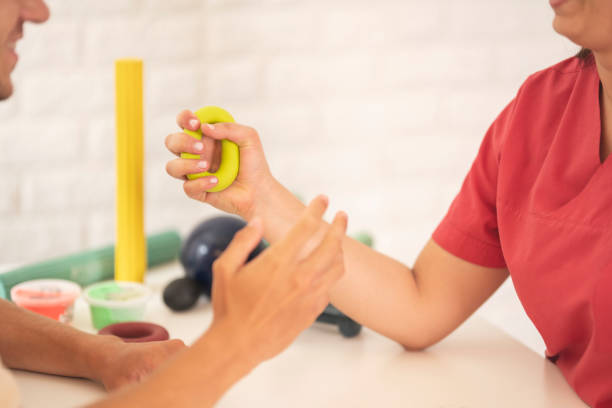Recovering from hand injuries often requires more than rest. Hand physiotherapy plays a key role in restoring motion, reducing pain, and regaining strength. Whether it’s for post-surgical rehab or managing long-term conditions, the right techniques can help you get back to your daily routine faster
Why Hand Strength and Flexibility Matter
Your hands perform hundreds of tasks each day—gripping, lifting, writing, typing. After an injury or surgery, weakness or stiffness can affect basic movements. Physiotherapy aims to:
- Rebuild muscle strength
- Improve joint flexibility
- Support tissue healing
- Prevent long-term stiffness
- Reduce the risk of future injury
Effective Physiotherapy Techniques for Hand Recovery
- Passive and Active Range of Motion Exercises
These exercises help keep the joints mobile. Passive movements are done with help from a therapist, while active ones are performed by the patient alone.
- Resistance Training
Therapists use resistance bands or light weights to gradually build muscle strength. Focus is often placed on fingers, thumbs, and wrists.
- Tendon Gliding Drills
These exercises are designed to prevent scar tissue from sticking to tendons. They are especially useful after surgery for carpal tunnel syndrome or tendon repairs.
- Joint Mobilisation
A therapist may gently move stiff joints to improve range. This is done carefully and may be paired with other stretching techniques.
- Sensory Re-education
This technique retrains the brain to interpret touch properly after nerve injuries. Patients are guided through textures, temperatures, and objects.
When a Thermoplastic Thumb Splint Supports Therapy
A thermoplastic thumb splint offers targeted support when the thumb joint is healing. It can help reduce stress on inflamed tendons and ligaments, allowing therapy to progress without setbacks.
Benefits of a Custom Thermoplastic Splint During Rehab
A custom thermoplastic splint is moulded to fit the exact shape of your hand. It’s often used to:
- Stabilise healing joints
- Limit harmful movements
- Allow safe motion in surrounding areas
- Improve compliance by offering better comfort
- Adapt over time as recovery progresses
Supporting Tools and Home Practice
In addition to in-clinic techniques, patients are often given tools to continue exercises at home.
Useful tools include:
- Therapy putty
- Hand grippers
- Foam blocks
- Stretch bands
- Finger exercisers
Conclusion
Improving hand strength and flexibility is crucial after injury or surgery. A structured physiotherapy plan, often supported by custom splints and guided exercises, can restore function and prevent long-term damage.
FAQs
- How often should I do hand exercises at home?
Typically, 2–3 times per day. Your therapist will give a tailored plan. - Can physiotherapy help with arthritis in the hands?
Yes. Targeted techniques reduce stiffness, pain, and improve grip. - Is a custom splint better than a generic one?
Yes. Custom splints offer a more precise fit, improving comfort and healing outcomes.
Read more: repurtech

[…] Read more: Hand Physiotherapy Techniques That Improve Strength and Flexibility […]